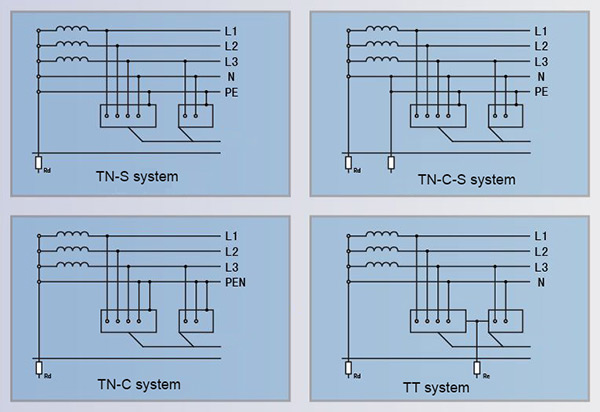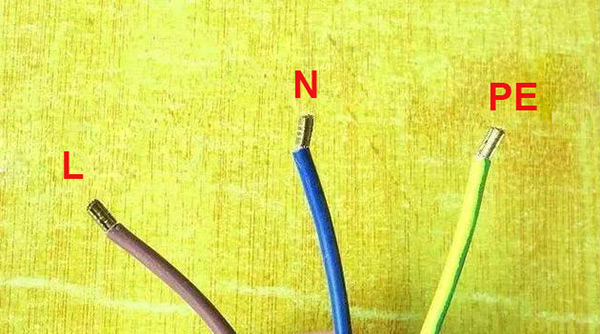Why is the Neutral Wire So Important?
The line drawn from the neutral point of transformer is called null line, or neutral wire, whose main function is to connect single-phase load, transmit single-phase current and three-phase unbalanced current, and reduce the neutral point potential drift of load.
In TN-C TN-C-S, N-wire can also protect the ground connection and zero connection.
The impedance of N-wire is at the milliohm level, and its unbalanced voltage of load neutral point is the voltage drop of N-wire current on N-wire impedance with small value. Even if the three-phase load is seriously unbalanced, it is enough to clamp the neutral point potential of load on the neutral point potential of power supply. While the ground resistance is at the ohm level, which is several hundred times larger than the N-wire impedance, so it is impossible to clamp the neutral point potential of load on the neutral point potential of power supply.

When the three-phase load is seriously unbalanced after the N-wire breaks, it is inevitable that the load neutral point will be seriously offset. Each outlet of low-voltage cabinet will draw one neutral wire from the zero row, together with the rebranching at the end, there will be numerous neutral wires in the system. If the neutral wire is broken somewhere, the damage will be different according to different location of breakage.
At this time, if the three-phase unbalance occurs, the load neutral point will shift to the phase with larger load, and the voltage of the phase with larger load will decrease, while the voltage of the phase with smaller load will rise, the unbalance of the three-phase load will be more serious and the displacement of the load neutral point will be greater. (The equipment forms a loop through the repetitive grounding point of neutral wire.)
When the neutral wire breakage and phase-to-ground short circuit occur simultaneously, the displacement of the neutral point will be greater. After the neutral wire is broken, the shell leaks electricity, which will cause electric shock.

Conclusion:
1. The neutral wire transmits unbalanced current to three phase, which will inevitably lead to the neutral point shift since there is unbalanced current in three phase.
As long as the N-wire impedance is at milliohm level, the unbalanced current caused by unbalanced voltage will be small, and the neutral point potential can be clamped to zero potential. Therefore, the neutral wire should be ensured not to break, and the grounding voltage should not be too high.
2. In TN-C system, neutral wire acts not only as clamping the neutral point potential, but also as the protective line, so the neutral wire must not be broken. If there is a need to break the neutral wire, the contacts used to disconnect the neutral line must be closed before the closure of other contacts and disconnected after the disconnection of other contacts. At this time, if the neutral wire breaks and the shell leaks electricity at the same time, the shell voltage of the equipment is close to the phase voltage, which will be dangerous, so the neutral wire of this kind of system must be grounded repeatedly. (The PE line in TN-S system can act as clamping, so neutral wire can be broken)
Repeated grounding can realize two kinds of protection:
1. Reducing ground voltage of equipment shell that leaks electricity.
Ujd, the ground voltage of equipment shell that leaks electricity equals to the voltage drop U produced by single-phase short-circuit grounding current Id in the zero-connection part. With repeated grounding, it can shunt voltage.
2. Reducing the risk of electric shock when breaking the neutral wire (also reducing the voltage of equipment shell that leaks electricity)
Ujd, the ground voltage of equipment shell that leaks electricity is close to the ground voltage U of phase voltage. With repeated grounding, both UO and UC are lower than U.
Setting principle of repeated grounding:
1. At every 1 kilometer along the lines and at the terminal of the trunk and branch lines of overhead lines, neutral wires should be repeatedly grounded.
2. In the power network where the grounding resistance of grounding device of power equipment is allowed to reach 10 ohms, the grounding resistance of each repetitive grounding device shall not exceed 30 ohms and there shall be no less than 3 repetitive grounding places.
3. Repeated grounding of neutral wires allows the use of natural grounding.
4. Protections of ground connection and zero connection shall not be simultaneously used in the low voltage line supplied by the same transformer or low voltage busbar.

